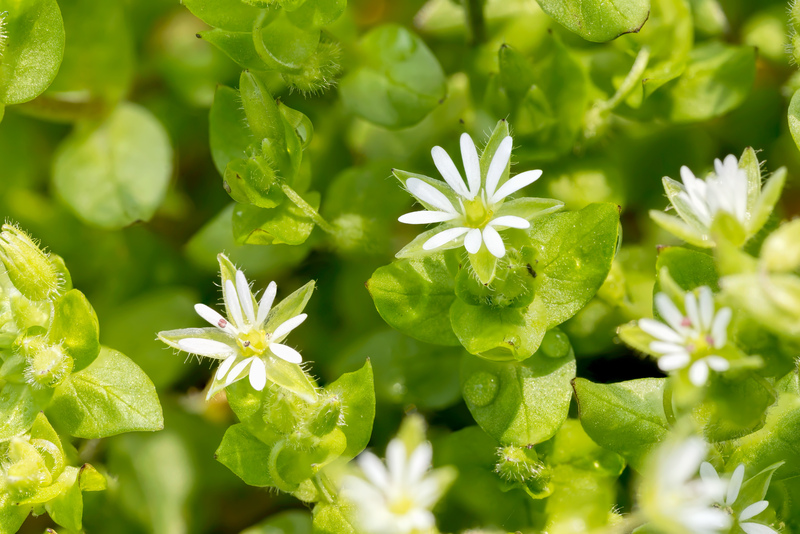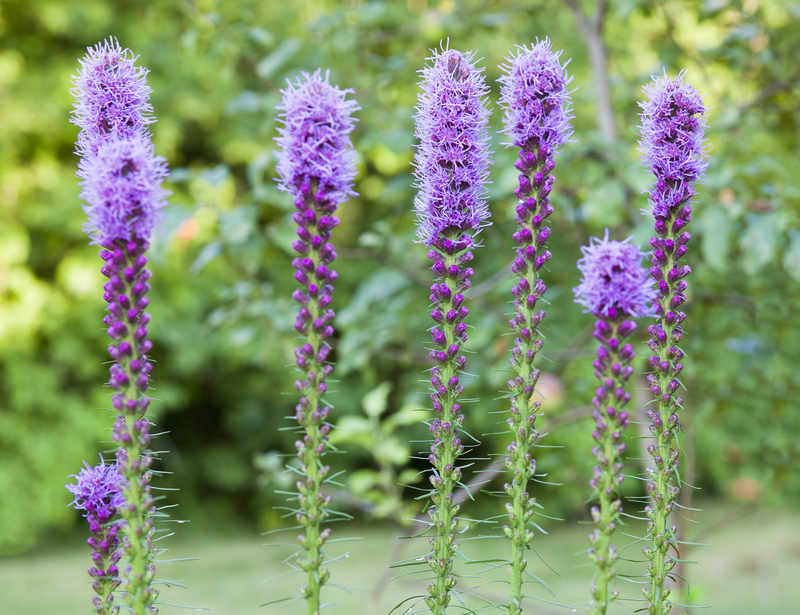Establishing Roots for a Garden Makeover
Posted on 03/07/2025
Establishing Roots for a Garden Makeover: The Ultimate Guide
Are you dreaming of transforming your outdoor space? Establishing roots for a garden makeover goes far beyond planting seeds. It is an art that combines planning, creativity, and horticultural science to revitalize your landscape. This comprehensive guide will take you through each phase of reimagining your garden, improving its soil health, designing layouts, and selecting the right plants--so you can create a lush, thriving, long-lasting oasis.

Why Is Proper Root Establishment the Key to a Successful Garden Overhaul?
When discussing garden makeovers, it's easy to fixate on the aesthetics--the vibrant blossoms, winding paths, and outdoor accents. However, true transformation begins below the surface. Healthy, well-rooted plants are the cornerstone of a sustainable and beautiful garden. Without proper root establishment, even the most appealing arrangements will soon struggle or perish.
- Enhanced Plant Health: Strong roots improve nutrient and water absorption, resulting in robust, vibrant plants.
- Disease Prevention: Healthy roots are less susceptible to root rot, pests, and fungal issues.
- Longevity and Growth: Properly established roots provide lasting structure, ensuring your garden thrives season after season.
Step-by-Step: Laying the Foundation for Your Garden Transformation
1. Evaluate Your Site Conditions
Begin your garden overhaul by assessing your current landscape. Each area comes with its own microclimate and challenges.
- Soil Testing: Know your soil pH, texture, and nutrient content. Most home improvement stores offer easy-to-use kits.
- Light Levels: Observe sun and shade patterns throughout the day. Some plants thrive in full sun, others in shade.
- Drainage: After a rain, check how quickly water disperses. Poor drainage can lead to root rot.
2. Preparing the Soil: The Root of Success
Soil preparation is perhaps the most critical stage in cultivating deep roots for your garden makeover. Rich, well-structured soil ensures your new plants will anchor themselves and flourish.
- Remove Debris: Clear out old plants, weeds, rocks, and debris to provide a clean slate.
- Loosen the Soil: Break up compacted earth with a spade or tiller to a depth of at least 12 inches. This allows roots to penetrate deeply.
- Add Compost: Work compost or well-rotted manure into the soil to increase fertility and improve structure.
- Mulch: Apply a layer of organic mulch once planting is complete. Mulch retains moisture, regulates temperature, and suppresses weeds.
3. Designing with Healthy Root Systems in Mind
An effective garden makeover balances visual appeal with biological success. Choose plant species whose root systems match your soil and climate conditions. Think beyond flowers--diverse plantings support healthier soil and resilience.
- Trees and Shrubs: These provide structure, privacy, and wildlife habitat. Ensure adequate space for mature root systems.
- Perennials: Invest in species known for hardiness and soil stabilization, such as ornamental grasses and daylilies.
- Annuals: While short-lived, colorful annual bedding plants bring instant vibrancy as your perennials become established.
- Groundcovers: Reduce bare soil and erosion. Varieties like creeping thyme and pachysandra develop wide root mats.
4. Planting Techniques for Robust Root Growth
Successful root establishment for a garden overhaul comes down to careful planting. Follow these steps for the best results:
- Right Plant, Right Place: Match plant species to your analyzed sun, shade, and soil conditions.
- Dig Wide, Not Deep: Dug holes should be twice as wide as the root ball, but no deeper than the plant was originally grown. This prevents settling and buried stems.
- Loosen Roots:
- If roots are densely circled around the container, gently tease them apart to encourage outward growth.
- Backfill Carefully: Replace soil without packing it down too tightly. Roots need oxygen as well as moisture.
- Water Generously: Newly planted specimens should be thoroughly watered to settle soil and eliminate air pockets.
5. Ongoing Care: Supporting Deep Root Growth in Your Redesigned Garden
Establishing deep roots for your garden makeover doesn't end with the first planting. Continued nurture ensures lasting success.
- Regular Watering: Especially during the first growing season. Deep soakings encourage roots to grow further down.
- Mulching: Renew mulch annually to maintain soil moisture and protect roots from extreme temperatures.
- Fertilizing: Use slow-release, organic fertilizers that support healthy microbial activity underground.
- Pest & Disease Monitoring: Inspect plants weekly for early signs of stress or infestation.
Choosing Your Garden's Style and Plant Palette
An inspiring garden transformation is rooted in thoughtful design. Before investing in plants, consider the overall look and function you desire.
Popular Styles for Garden Makeovers
- Cottage Gardens: Dense, informal plantings with a mix of perennials, annuals, and edible plants.
- Formal Gardens: Symmetry, trimmed hedges, clear paths, and geometric beds.
- Wildlife Gardens: Native species attract pollinators and birds, supporting biodiversity.
- Low-Maintenance Gardens: Drought-tolerant and pest-resistant plant choices for easy upkeep.
Top Plant Choices for Strong Root Systems
Selecting varieties that self-establish and develop powerful roots will ensure your landscape renovation thrives:
- Native Trees: Oaks, maples, and redbuds bring shade, stability, and long-term value.
- Flowering Shrubs: Hydrangeas, lilacs, and viburnum add color and structure.
- Hardy Perennials: Coneflowers, black-eyed susans, coreopsis, and hostas come back each year, developing robust roots.
- Groundcovers: Ajuga, vinca, and sedum fill gaps and hold soil in place.
Sustainable Practices for Root Establishment
Eco-friendly methods not only improve root health for a garden redesign but also support your local ecosystem. Consider these sustainable habits:
- Composting: Recycle yard waste and kitchen scraps to enrich your soil naturally.
- Soil Amendments: Use organic matter like leaf mold, worm castings, or locally sourced manure to improve fertility.
- Rainwater Collection: Harvest rain in barrels and use it to irrigate beds, mimicking natural rainfall patterns.
- Mulching with Leaves: Fallen leaves provide nutrients, moderate soil temperature, and reduce runoff.
- Reduced Chemical Use: Minimize synthetic herbicides and pesticides to support beneficial soil organisms and pollinators.
Common Mistakes in Garden Makeovers (And How to Avoid Them!)
Even seasoned gardeners can encounter pitfalls during their garden makeovers. Watch out for these errors to ensure the healthiest root development:
- Ignoring Soil Quality: Skipping soil testing or amendments leads to underperforming plants with shallow roots.
- Overcrowding: Planting too closely inhibits airflow and causes roots to compete for space and nutrients.
- Overwatering or Underwatering: Roots need consistent but not soggy conditions. Use soaker hoses and check soil with your finger.
- Planting at the Wrong Depth: Too shallow and roots dry out; too deep and stems may rot. Match the plant's previous soil line.
- Wrong Plant Selection: Non-native or inappropriate choices for your climate may never develop deep, resilient roots.
Year-Round Tasks for Healthy Roots and a Flourishing Garden
Maintenance is the unsung hero of long-term garden transformations. Keep your landscape's roots healthy through each season:
- Spring: Inspect for winter damage, mulch beds, and apply organic fertilizer.
- Summer: Deep water during dry spells and monitor for pests or disease.
- Autumn: Remove fallen leaves, divide overcrowded perennials, and plant bulbs.
- Winter: Protect vulnerable plants with mulch or burlap and prune dormant trees or shrubs.
Frequently Asked Questions About Garden Root Establishment
-
How long till roots are fully established after a garden makeover?
- It varies by plant type--annuals may settle in a few weeks, while shrubs and trees may take one to three years.
-
Is tilling necessary for every garden renovation?
- Not always. In some no-dig methods, layers of mulch and compost improve soil while protecting existing structure.
-
Can I reuse old beds or do I need new soil for root growth?
- Old beds can be revitalized with compost and amendments. Remove diseased material and aerate before replanting.

Conclusion: Rooted in Success--Transform Your Garden from the Ground Up
A memorable garden makeover isn't just about what you see above the soil. It's about establishing strong roots--figuratively and literally--for a vibrant, lasting, and low-maintenance paradise. Whether you're a beginner or a seasoned green thumb, investing time and effort in soil health, proper plant selection, and ongoing care will ensure your garden's transformation stands the test of time. Begin planning today, and watch your outdoor sanctuary flourish for years to come!
Additional Resources:
- Royal Horticultural Society: Soil Preparation
- Garden Design: Landscape Makeover Ideas
- Harvard Extension: Sustainable Garden Design
Start your journey to the garden of your dreams today--by establishing its roots!

